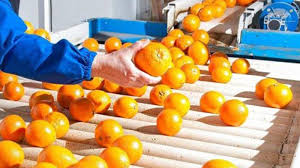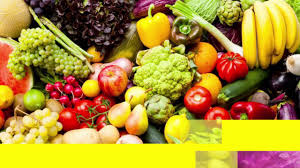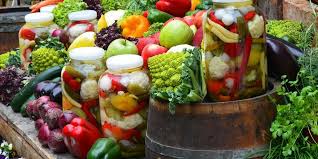Horticultural crops are cultivated for their produce, which are harvested at the end of a production period. The produce harvested are either marketed for immediate or industrial utilization or stored for future use.
What happens to harvested produce before being taken by the consumer is known as postharvest technology or operations. In this article, the focus is on postharvest technology and the handling of horticultural crops up to the stage of marketing.
1. Understanding Postharvest Technology In Horticulture

Postharvest technology involves all treatments or processes that occur from the time of harvesting until the crop produce finally reaches the consumer. Efficient techniques for harvesting, transportation, handling, storage, processing, packaging, and marketing are components of the postharvest chain.
All these activities are aimed at adding value to the produce and reducing losses. Harvesting is included as a component of postharvest because the method of harvesting has a large impact on the postharvest life of the crop produce.
Postharvest treatment largely determines quality, whether the crop is sold for fresh consumption or used as an ingredient in a processed food product.
The most important goals of postharvest technology are keeping the product cool, avoiding moisture loss, slowing down undesirable chemical changes, avoiding physical damage such as bruising, and delaying spoilage.
2. Handling Practices For Horticultural Crops After Harvest
This refers to practices carried out on immediately harvested crop produce before they reach the consumer. Before horticultural crop produce reaches the table or consumer, it undergoes a number of postharvest handling processes depending on the crop type and the form in which it will be presented. Handling includes the following:
1. Washing: This involves cleaning crop produce from soil and dirt particles before packaging or marketing. Vegetables are generally not washed before packaging or marketing.
They are usually managed during growth using close spacing or mulching to keep them clean. Light shaking or hand-stripping is used to remove any particles sticking to vegetables.
Fruits such as apples may be washed before packaging or marketing. Root vegetables such as carrot are generally washed to remove soil.
Onions and other bulbs are not washed but cured under the sun to increase shelf life. Because horticultural products from above-ground plant parts are not washed before packaging, the produce should routinely be washed before use.
2. Sorting and Grading: After harvesting, the produce are hand-sorted or separated into different categories (ripe, unripe, and discards). These operations group products into quality classes for pricing and use.
Hand harvesting allows only a certain quality of products to be picked, and sorting and grading may be done in the field for some crops. Some products are sorted and graded, packed immediately, and transported directly from the field.
During sorting, defective, immature, diseased, cracked, or blemished products are removed and placed in lower quality categories. Premium quality produce are sold at higher prices. Each crop has quality standards used for sorting and grading, with fruits often graded by size.
Read Also: Gumboro Disease: Symptoms and Prevention
3. Storing Unprocessed Horticultural Produce

This refers to preserving harvested products to extend their shelf life. Most horticultural crops are perishable and must be stored properly to avoid postharvest losses. Storage conditions (especially temperature, humidity, and light) and the type of crop determine how long the crop can be stored before deteriorating.
The general goals for storage are to slow respiration in living tissues and conserve moisture to prevent dehydration. These are achieved by using appropriate temperature (usually cool or cold), maintaining proper oxygen and carbon dioxide levels, and controlling humidity.
Cool-season crops are stored at 0–10°C, while warm-season crops are stored at 10–12°C. Fruits and vegetables should be stored at high relative humidity. For instance, lettuce and spinach need 90–95% relative humidity, while garlic and dry onion require 70–75%.
Light exposure causes produce such as potatoes to turn green, so darkness or dim light is recommended during storage. There are two general storage methods:
i. Low Temperature Method: Low temperature reduces respiration rate, heat production, and spoilage. It slows all biological and enzymatic reactions.
Cool-season crops tolerate lower temperatures better than tropical crops. Refrigeration is used for this purpose, with refrigerated trucks and containers helping to transport fresh produce over long distances. Ideal storage temperature ranges from 0–10°C.
ii. Low-Moisture Method: Crops like grape, date, and apple can be preserved by drying. Solar dehydration uses sunlight for drying and is inexpensive in sunny areas. Produce is spread in appropriate containers and exposed to dry, warm air. For larger quantities, forced hot air at 60–70°C is used. Moisture content should be 8–12%, depending on the crop type.
4. Fumigation For Long-Term Storage
Dry grains and fruits such as grapes and citrus require fumigation to eliminate rodents, insects, and decay-causing organisms. Methyl bromide is a widely used fumigant effective in storage houses. Sulfur dioxide is used to protect grapes from decay.
Read Also: Vaccination Program for Poultry Chickens
5. Preservation Methods For Horticultural Produce

i. Freezing: Quick freezing is a common preservation method where fresh produce is stored in a freezer. However, it may affect the structural integrity of certain products. For example, frozen tomatoes become soft after thawing.
Freezing should be done rapidly to avoid large ice crystal formation, which ruptures cells. Rapid freezing forms tiny crystals that preserve structure. Quick freezing temperatures range from –29 to –40°C. Packaging is essential to avoid freezer burn caused by sublimation of water into ice.
ii. Canning: This involves placing produce in airtight containers and sterilizing them using pressure. Brine may be used instead of water for preserving vegetables like onion, beet, and pepper. The heat used during sterilization may affect colour, texture, flavour, and nutrients.
Low-acid vegetables (pH 4.5–7.0) require high sterilization temperatures to destroy Clostridium botulinum. Canned goods can last for years, but spoilage may still occur due to bacteria. Salt in cans can cause corrosion and shorten shelf life. Humidity and heat also contribute to spoilage.
iii. Fermentation: This process uses bacteria to decompose carbohydrates anaerobically. It produces alcohol and lactic acid, which affect food flavour. Alcohol may ferment further into vinegar. Grape juice, for example, becomes wine.
A type of fermentation using salt is pickling. Pickled vegetables include cucumber, onion, cauliflower, and tomato. Pickled cabbage is known as sauerkraut. Pickling can also be done using citric acid or vinegar instead of bacteria.
iv. Processing With Sugar: High sugar concentration preserves certain fruits by increasing osmotic pressure, which inhibits microbial growth. Products include jelly (from fruit juice), jam (from concentrated fruit), marmalade (from citrus fruit and rind), and preserve (from whole fruits).
6. Marketing Of Horticultural Produce
Marketing is the process of supplying satisfactory products to consumers at mutually agreeable prices. In more advanced and even developing market systems, various service providers (middlemen) operate between producer and consumer.
These providers offer packaging, storage, transport, financing, and distribution. Sometimes, fresh products are processed into secondary products before reaching the consumer. Despite the role of middlemen, some growers market directly.
From the explanations in this article, it is clear that for the consumer to receive value and the producer to earn income, it is important for the farmer to present produce in a form that appeals to the consumer.
This requires knowledge of postharvest technology. The farmer or any other actor in the marketing chain carries out one or more postharvest operations to add value to the crop before it reaches the final consumer.
Do you have any questions, suggestions, or contributions? If so, please feel free to use the comment box below to share your thoughts. We also encourage you to kindly share this information with others who might benefit from it. Since we can’t reach everyone at once, we truly appreciate your help in spreading the word. Thank you so much for your support and for sharing!

